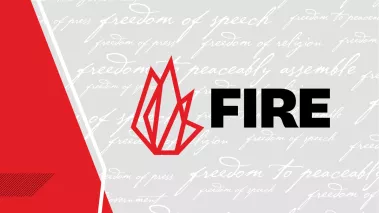Table of Contents
Dispositions in Teacher Education: Old Tricks, New Name

The Spring 2007 issue of Education Next features an excellent article on the widespread use of “dispositions” in teacher education. Authored by Kent State Professor Laurie Moses Hines, the article details how today’s “dispositions” are an updated version of the “mental hygiene” requirements widely utilized in teacher education between the 1930s and 1960s.
Hines’s article provides a useful historical context to FIRE’s ongoing battle against the disposition-based assessments currently employed in teacher education. Hines writes:
The screening of prospective teachers for maladjustment 50 years ago and the dispositions assessments going on today have remarkable similarities. As William Damon of Stanford has noted, dispositions assessment “opens virtually all of a candidate’s thoughts and actions to scrutiny...[and] brings under the examiner’s purview a key element of the candidate’s very personality.” The same underlying assumption—that scientific means of selection and training could guarantee good teachers—held sway at mid-century with respect to mental hygiene. Teacher educators who guarded entry to the profession used the techniques of science to study, measure, and evaluate the teacher candidate as do those who guard entry today. Only the specific values and attitudes they appraise have changed. Advocates of dispositions assessment claim that their methods are “standards-based” and provide “accountability”—scientific-sounding catchwords that hold considerable weight in the current political climate.
Hines’s analysis focuses on several FIRE cases involving the use of dispositions. The article opens by recounting FIRE’s successful intervention on behalf of Washington State University graduate student Ed Swan, whom Torch readers will remember for being disciplined and threatened with dismissal for his conservative political viewpoints because they failed to satisfy the school’s disposition requirements. Hines also details FIRE’s victorious campaign against the inclusion of a “social justice” disposition by the National Council for the Accreditation of Teacher Education (NCATE), a governmentally authorized accreditor of education schools, as well as FIRE’s most recent dispositions challenge at Columbia University’s Teachers College.
By locating today’s reliance on politically loaded dispositions in a larger historical context, Hines’s article helps isolate and reveal the dangers of mandating a particular worldview for our nation’s teachers. By requiring that prospective teachers be evaluated by their commitment to vague ideals like “social justice,” today’s schools repeat yesterday’s mistakes, when teachers were graded according to equally amorphous standards, like “attainments and attitudes.” Hines’s research demonstrates that both then and now, teachers’ schools err grievously when they substitute personality tests and political allegiances for more practical, relevant considerations, such as student performance in the classroom. Hines’s conclusion is precisely correct: “Those committed to academic freedom within higher education should be concerned when professional socialization trumps freedom of conscience in teacher education programs.”
In need of First Amendment resources for teachers? The Foundation for Individual Rights in Education has you covered. Our "First Things First" First Amendment textbook for college undergraduates explores the fundamentals of modern American free speech law. Meanwhile, our K-12 First Amendment curriculum modules help educators enrich and supplement their existing instruction on First Amendment and freedom of expression issues in middle and high school classrooms. Explore thefire.org for even more First Amendment educational resources.
Recent Articles
Get the latest free speech news and analysis from FIRE.

FIRE's 2025 impact in court, on campus, and in our culture

The trouble with banning Fizz

VICTORY: Court vindicates professor investigated for parodying university’s ‘land acknowledgment’ on syllabus
